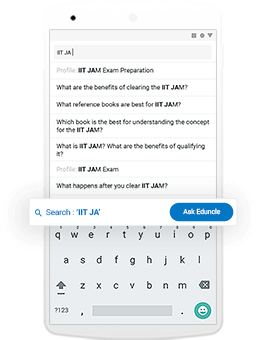Time management is very much important in IIT JAM. The eduncle test series for IIT JAM Mathematical Statistics helped me a lot in this portion. I am very thankful to the test series I bought from eduncle.
Nilanjan Bhowmick AIR 3, CSIR NET (Earth Science)Shweta Thakur posted an Question
- IIT JAM
- Chemistry (CY)
Why on meta position only - i ,- m ,- r exist ????
why on meta positionfbdhdhdududu only - I ,- m ,- r exist ????
- 0 Likes
- 2 Comments
- 0 Shares
Do You Want Better RANK in Your Exam?
Start Your Preparations with Eduncle’s FREE Study Material
- Updated Syllabus, Paper Pattern & Full Exam Details
- Sample Theory of Most Important Topic
- Model Test Paper with Detailed Solutions
- Last 5 Years Question Papers & Answers
Sign Up to Download FREE Study Material Worth Rs. 500/-










 >
>
 >
>








Dinesh khalmaniya 1![best-answer]()
The inductive (I) effect and the resonance (R) effect are the two ways in which substituents can donate or withdraw electrons from benzene ring. Inductive effect : The electron donating groups like -CH3, which is less electronegative than the ring activate the ring and direct the coming groups to orthodontist and para position. This is +I effect. The electron withdrawing groups like the halogen atoms which are more electronegative deactivate the ring and direct the coming groups to the meta position. This is -I effect. Resonance effect : The groups or atoms that have unbonded electrons i.e. lone pair of electrons on them, donate their electrons in the ring and they get delocalised. This is +R effect and it directs the coming groups to the ortho and para positions. E.g. NH3, CO groups The electron withdrawing groups pull the electron density towards themselves and the delocalisation of charge is reduced. This is -R effect and it directs the coming groups to the meta position. E.g the nitro group. Hope I answered your doubts correctly.
here at meta how can u say that - I -r exist
yha phenoxide ion k sence me ortho he to shi. apn acidiy OH group or cooH group k sence me dekhte he na so jo group inke ortho or para pr present hota vo group OH or COOH pr jada effect dalega na
mujhe bhot confusion ho ri hai samagh no aa rha